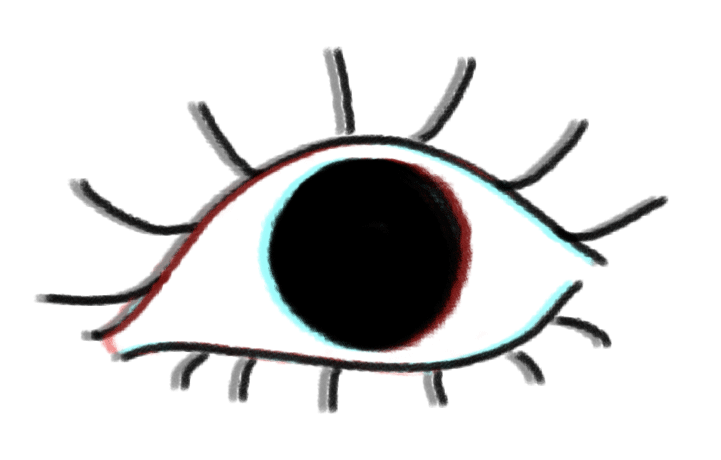Poster 2 Process
- Helen

- Apr 1, 2020
- 3 min read
Updated: Mar 13, 2021
Haiku:
water drip
measuring the silence
between us

For poster 2, we had to design a movie poster related to our haiku. Since I focused on the word "measuring" and idea of balance in my previous poster, I decided to interpret the line "silence between us" for this one.
Even though the sketches I used for my current haiku was for another poem, I felt that it was suitable because of the rule of thirds composition and the use of female characters.
For the subject of my poster, I wanted to feature a female character hidden in the dark for an air of mystery. I also made her conventionally attractive and looking at the viewer. I also wanted to include drops of blood related to her to connote danger.
Colour is an essential part of a poster as they build the aesthetic and narrative of the design, similar to what Cameron Chapman said in her Colour Theory for Designers series. When looking into colour, I took in consideration of three aspects of colour theory:
Saturation/Chroma
Low saturation and chroma in background colours to draw focus to blood drop in foreground
Value
Low value for all colours to signify horror/mystery genre
Schemes
Complementary of red and green, replicates the VHS aesthetic

As for typography, I decided to use American typewriter as it is a semiotic to the past and classic horror symbolism.


The first version of the movie poster was compliant to the rule of thirds, with two drops of blood acting as the vertical grid lines and the title as one of the horizontal ones. However, even though the droplet as the tittle and title work with the composition, the eye of the girl is out of focus despite her importance. Also the lack of textual context on the poster makes it look like an album cover due to the square format.

In the second version, I duplicated the girl's face and made her eye closer to the rule of thirds focus point. Other than a tool for better composition, the additional character also added more narrative into the semiotics of the design. Taking the meaning of "between us" from the girl's eye contact with the audience to her also being spied on from someone further in the shadows. I also added a quote, billing block and date to signify stronger towards a movie poster.
Although it looks much more like a movie poster and a bit more balanced, there was a lack of clarity and balance of that between the characters and texts.

In the third version, the characters are more visible, but the alignment of typography is still unbalanced. All the different sections were competing with each other and with the background. The quote was put there arbitrarily, which made the overall composition of the design out of place. At this point I realised that I have focused too much on quantity over quality, so I decided to abandon this current layout.
For the fourth and final version, I positioned the girl into the middle and made her bigger to create more focus on her significance. The quote was shortened and moved to below the title and much more smaller, because it was only an extra detail. The rule of thirds composition was kept through the blood drop, so paired with the rest of the design, the poster make a strong statement by playing with points of focus.
Final Poster

References
Gallagher, M. (2019, December). Vanguard Haiku.World Haiku Review. Retrieved from https://sites.google.com/site/worldhaikureview2/whr-december-2019-issue/vanguard-haiku-page-3
Chapman, C. (2010, January 28). Colour Theory for Designers, Part 1: The Meaning of Colour. Smashing Magazine. Retrieved from https://www.smashingmagazine.com/2010/01/color-theory-for-designers-part-1-the-meaning-of-color/
Chapman, C. (2010, February 2). Colour Theory For Designers, Part 2: Understanding Concepts And Colour Terminology. Smashing Magazine. Retrieved from https://www.smashingmagazine.com/2010/02/color-theory-for-designers-part-2-understanding-concepts-and-terminology/
Chapman, C. (2010, February 8). Colour Theory for Designers: How To Create Your Own Colour Schemes. Smashing Magazine. Retrieved from https://www.smashingmagazine.com/2010/02/color-theory-for-designer-part-3-creating-your-own-color-palettes/




Comments